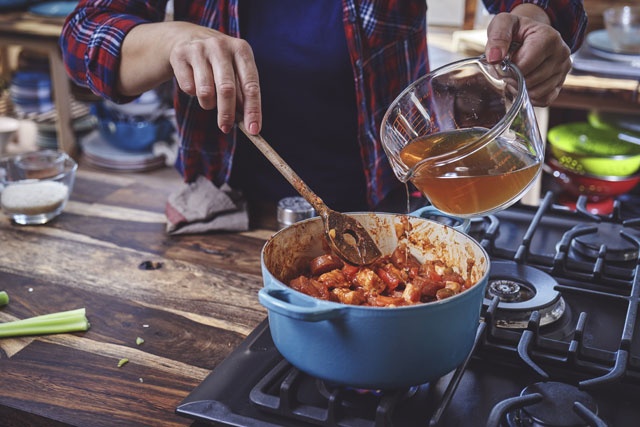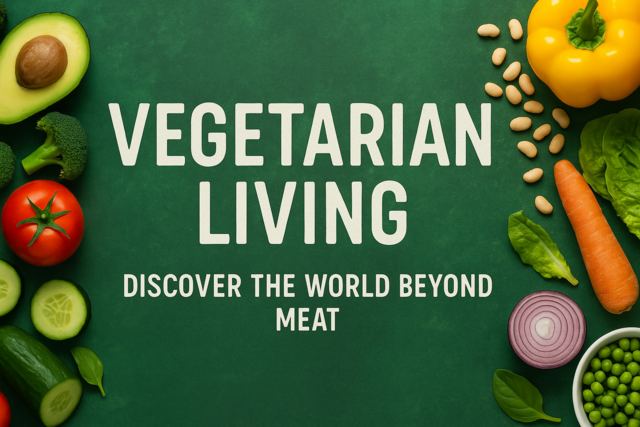How to Preserve and Can Other Foods
In addition to all the things you have learned so far that can be canned and preserved, there are even more! For centuries, people have been finding ways to preserve everything from fruits and vegetables, to meat. Today is no different. The stores are stocked full of companies that are doing the canning and preserving for us � a process that used to largely be done by our ancestors. Not convinced? Consider the frozen food aisle (freezing method of preserving), the canned goods aisle (canning method), and more. From juices, to herbs, to everything you can think of, manufacturers are using canning and preserving methods to stock store shelves.
You can do the same thing in your home! Just about everything you can think of, you are able to can or preserve, using one of the various methods. From dehydrating, to freezing, to canning, and smoking, there are plenty of options available. And by doing the work yourself, you essentially cut out the middle man, helping to keep costs down and, in turn, usually end up with a healthier product.
In this article we look at some of the other things that can be canned or preserved that we haven't yet discussed, such as herbs and meats.
Preserving Herbs and Spices
If you look in your kitchen right now you probably have rack or cupboard filled with various spices and herbs. From thyme, to cilantro, and everything in between, you can save a lot of money by drying and preserving your own herbs. In the store, one little bottle will set you back $3 or more! But with the knowledge of how to preserve and dry your own herbs, you can say goodbye to those expenses, while not having to compromise on the power of herbs and spices.
Whether you are growing your own herbs at home, or purchasing from the store or farmer's market, it is easy to preserve them for later use. There are two main methods to preserving your own herbs and retaining the most flavor. They are:
Freezing. Many people opt for freezing the herbs because it retains the essential oils, which give them flavor. To freeze them you do not need to blanch first. You would simply rinse them all off, remove all the leaves from the stem and lay out on a tray to dry. Once they are dry you can put them all in a freezer-safe bag and label the bag as to what they are. You will find that you then have herbs readily available that you can use for cutting up and adding to soups, sauces, and other dishes. Similarly, some people blend the herbs with oil to make a paste and then freeze that for later use. You can either do this with one herb, or create a blended paste of herbs.
Drying. When it comes to drying your herbs, you can either opt for using a dehydrator, or you can air dry them by hanging them (rinsing them off first). There are herb-drying racks you can purchase, or you can create something on your own to use. Once the herbs are dry you can put them in an air tight jar and use as you would the jars of herbs you would get from the grocery store. If you live in a climate where it is very humid you will probably need to use a dehydrator, rather than using the air dry method.
Preserving Meats
There are several ways you can preserve meats, including smoking, freezing, and even canning. From ground beef, to venison, and even seafood and poultry, there are ways that you can preserve all types of meat. All meat first needs to be fresh in order to get the best results. Most people prefer the freezer-method route to preserving meat; others choose to pickle it; while some opt for smoking it for preservation. But there are also people who do can meat, and it is a safe method, providing all necessary safety guidelines have been followed.
If you are going to use the freezer method to preserve meat, you should wrap it tightly in an appropriate plastic wrap or foil. If you are going to use it within a week you should be fine just freezing it as is. But if you plan to freeze for a longer period of time you should remove the fat off the meat and thoroughly rinse it all off before freezing.
Fish needs to be processed and cleaned prior to preserving. Fish ideally should be processed within two hours of being caught, and should then be kept on ice until you are ready to move onto the canning process. Because of the acid level in meat you will need to use a pressure canner if you are going to do the canning method.
Another popular route that people take to preserving meat is to make jerky out of it, which is a process of drying it out. Once you dry it out to make jerky, it will last for up to five weeks. Typically you would marinate the meat in a brine before you would dry it out. To dry the meat out, you would use a dehydrator or the oven.
Other Things You Can Make and Preserve
There are so many things that you can make and preserve, that entire cookbooks have been dedicated to it. In addition to all we have already learned about, some of the additional things you may want to consider making and preserving include:
-
Your own ice cream.
-
Fruit topping for your ice cream.
-
Gelato, frozen yogurt or sorbet.
-
Your own syrups (blueberry syrup, for example), butters, and vinaigrettes.
-
Preserving nuts by canning them.
-
Making your own sauerkraut.
-
Creating your own cooking stock.
-
Making and preserving your own applesauce, apple butter, horseradish sauce, spaghetti sauce, and more!
Food for Thought
Do you know how to seed a cucumber? Simply peel it, then, slice it down the middle lengthwise. Next, use a small spoon to scoop out the seed area, all the way down the entire length of the cucumber, removing all the seeds as you go along. You will want to do this is you plan to make your own relish, as you don't want seeds in your relish. Plus, it is the seeds that make some people burp after eating them. So when you serve cucumbers you can easily remove the seeds and take care of that little gastrointestinal problem.
Canning and Preserving for Special Diets
In this article, we will look at this a bit more in terms of being able to avoid particular ingredients being in your food, or being able to reduce the amount of an ingredient in your food.
Special Diets
Many people are on some form of special diet that may make it more difficult to purchase products right off the shelf at a grocery store. When you can and preserve at home you are easily able to make necessary adjustments and accommodations so that the food works for your particular diet.
Some of the special diets that may make life a little easier by home canning and preserving include:
-
Low salt
-
or sodium
-
No sugar or reduced sugar
-
Gluten-free diets
-
Vegan or dairy-free diets
-
Sulfite-free diets
-
Egg-free, soy-free, wheat-free, corn-free, etc.
It may seem like finding canned goods that accommodate these special diet concerns would be quite easy. And sometimes it is. But not always! There are many canned and preserved foods that contain things that you would not expect to be there. And beyond that, many of the foods that are devoid of the unwanted products are still produced in facilities that produce the unwanted foods, so cross-contamination is a factor.
If you are just trying to avoid a particular food and cross-contamination happens, then it is probably not a big deal. But if you suffer from celiac disease, for example, and the canned or preserved foods you purchase have been produced in a factory that also produces the foods you are trying to avoid, there is a risk for cross-contamination, which for that person can pose a serious health risk.
In addition to cross-contamination concerns, many times the foods that are created for those with special diets cost more. With the added expense of obtaining foods that are gluten free, dairy free, etc., it is more economical to can the foods yourself.
A Look at the Special Diets
Let's look at a few of these special diets you can focus on for canning and preserving food:
Baby foods. Baby foods can easily be canned and put into jars; however, due to the possible risk of botulism in infants, it is generally not recommended to do so.
Canning without sugar. If you are going to can fruits without using any sugar, you will need to make sure you use fruits that are firm, but fully ripe. You will want to avoid using any syrup in your canning, and instead opt for water or unsweetened fruit juices. The best thing to do is use juice from the fruit that you are canning. If you plan to use any type of sugar substitutes, it is best to wait and add them when you are ready to serve the fruit.
Canning without salt. Most foods will do quite well without salt, especially if it is there for seasoning purposes only. For things like meat, seafood, poultry, tomatoes, and vegetables, simply omit the salt from your canning process. Of, if you would like to reduce it, rather than omit it all together, you can do that as well. Like sugar substitutes, any salt substitutes should be used when you are ready to serve the food.
Pickling with less salt. If you are canning pickles, you can reduce the sodium, but it may change the way the pickles taste. However, if you want to make something that ferments, such as sauerkraut or pickles, you will need to keep the recommended salt levels, because the proper amounts of salt are necessary for fermentation.
Sulfite-free diets. Many commercially dried fruit products have used a sulfuring process to help the fruit retain its color and nutritive value. But some people are allergic or sensitive to sulfites and need to refrain from eating sulfured food. Preparing these foods at home will help you avoid the sulfur process. To retain the color of the food you can dip them in a solution of ascorbic acid.
A Look Ahead
Now you have an even better idea of the creativity and control that you have when it comes to canning and preserving your own food. Just as you have controlled more of what you put into each dish that you cook, you can do the same with the food that you will store. Taking back the reins of what your food will be made of is just one more great reason that canning and preserving is a age-old tradition that we all should take part in!
Food for Thought
Do you know how much sodium per day you are supposed to stay under? According to the United States Department of Agriculture (USDA), it is no more than 2,400 milligrams of sodium, which is around 1 teaspoon. Many people salt their food as they use it, others get even more in their food before they sit down to eat it. But if you start reading the labels on the food at the grocery store, especially things like canned vegetables, chips, condiments, and processed foods, you will see that it is easy to get way more than that on a daily basis. Test it out and track your sodium intake for just one week to see how much you get on average. You may be surprised!
























